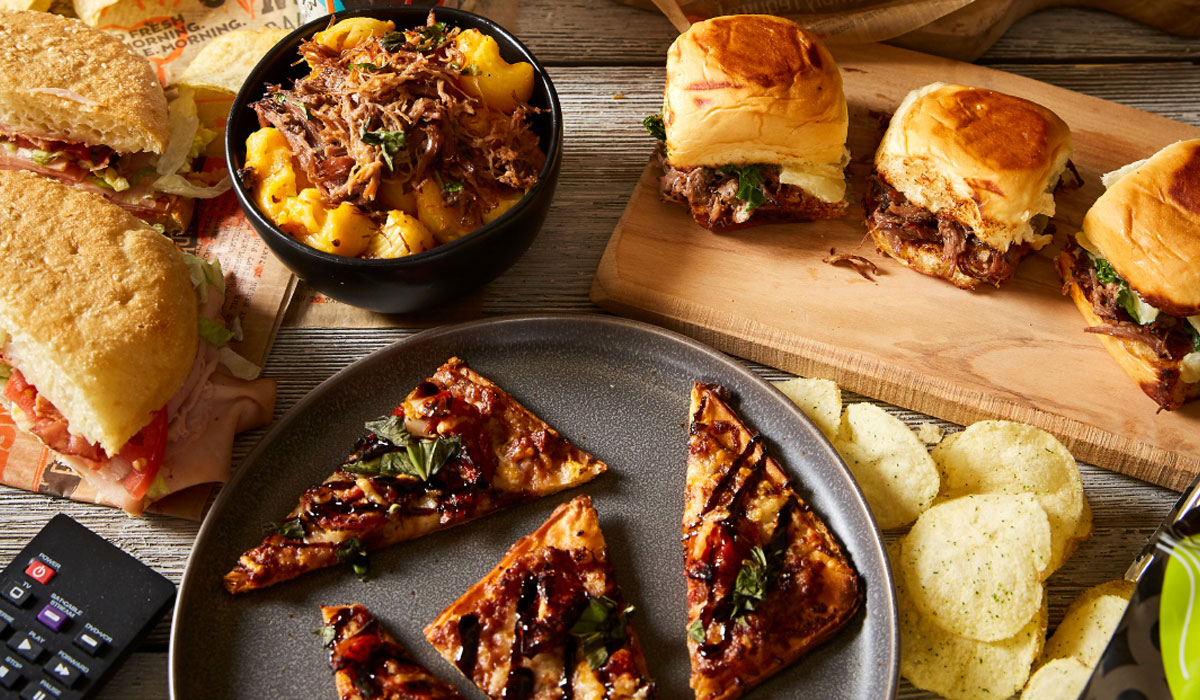As off-premises business continues to capture a greater share of restaurant orders, the industry conversation has focused on the merits (and drawbacks) of partnering with third-party delivery services. By comparison, other crucial considerations, such as optimizing the store layout and operations to accommodate off premises, have received less attention. For brands that already boast a strong take-out program, the shift can be as simple as managing increased order volume. For others, the changing dynamic lets them reexamine everything from in-store pickup spaces to staff training and responsibilities.
We checked in with three operators to learn how they’re feeling—and adapting to—the off-premises pinch.
Robin Seward / Vice President of Marketing, Schlotzsky’s
Third-party delivery and takeout have become such a huge part of quick service that participation is essential to stay relevant. As more consumers look for ways to simplify their lives, online and mobile ordering are the vehicles that fill those needs. Today, our drive thru, to-go, call-in, and online ordering make up 60 percent of the business.
Operationally, we’ve had to make some concessions. We’ve added tablets at the front counter because placement ensures the crew is alerted to the order and has easy access when multitasking with customers. Specific crewmembers are assigned to check that orders are correct before they leave the restaurant. We’ve put tamper-evident stickers on the packing to ensure safe transport of food and have modified daily cash accounting to ease reconciliation and prevent theft.
The redesign to Schlotzsky’s Austin Eatery provides a layout that accommodates guests who are running in to pick up an order. A designated pick-up area is easily accessible from the front door, and we’ve added shelving to allow for multiple orders and large catering trays. The parking lot has specific spots for takeout and delivery and drive-thru windows for quick grab and go.
Alan Magee / Vice President of Digital Marketing and Technology, Church’s Chicken
As we approach the one-year mark of our delivery launch, we’ve seen higher rates for adoption and growth in multiple-provider markets. Our restaurants with the highest delivery sales have really embraced both the marketing and operations aspects that are important to success.
Takeout has always been a large portion of our business. Our expertise in takeout established a baseline for us in terms of prep and timing, but we’ve taken it much further. We have built an extensive onboarding and training program for delivery, along with consistent best-practice sharing from the highest-performing operators. We’ve incorporated some new packaging elements and, in certain locations, hot holding containers, to ensure that our guests receive the freshest and hottest food once delivered.
Our current Church’s restaurant design accommodates off-premises business pretty effectively. As this channel continues to grow in volume, future designs will evaluate the multiple new variables observed and measured over time. This way, we will be able to make design decisions that provide operational ease for our teams, as well as simplicity and satisfaction for both drivers and guests.
Micha Magid / Cofounder, Mighty Quinn’s
Delivery has definitely grown as a percent of sales since we opened, as the convenience factor of dining out and mobile ordering has become a more meaningful driver. Those sales are currently running in the mid-teens as a percent of systemwide sales.
The take-out/delivery counter is set up next to the meat-cutting station that serves guests dining in. It’s positioned so our team can utilize the same prepared barbecue to maximize freshness and minimize food waste. We have ordering tablets for both our own Mighty Quinn’s platform as well as some third-party partners for ease of use. From a design perspective, it just looks like a second cutting station, which works well when we need it for some of our busiest days.
Off premises is a great secondary revenue source for the restaurant, but it shouldn’t take away from the dining-in guest experience. It would be frustrating if you were trying to order and the person helping you was distracted fulfilling an order from a tablet, so we had to separate that system. This also helps us maintain our line speed.
In addition, this system has allowed us to increase our catering business, since the team now has no capacity issues. We’ve been able to pack up a 500-person office lunch with the same team that is getting the restaurant ready to open.













